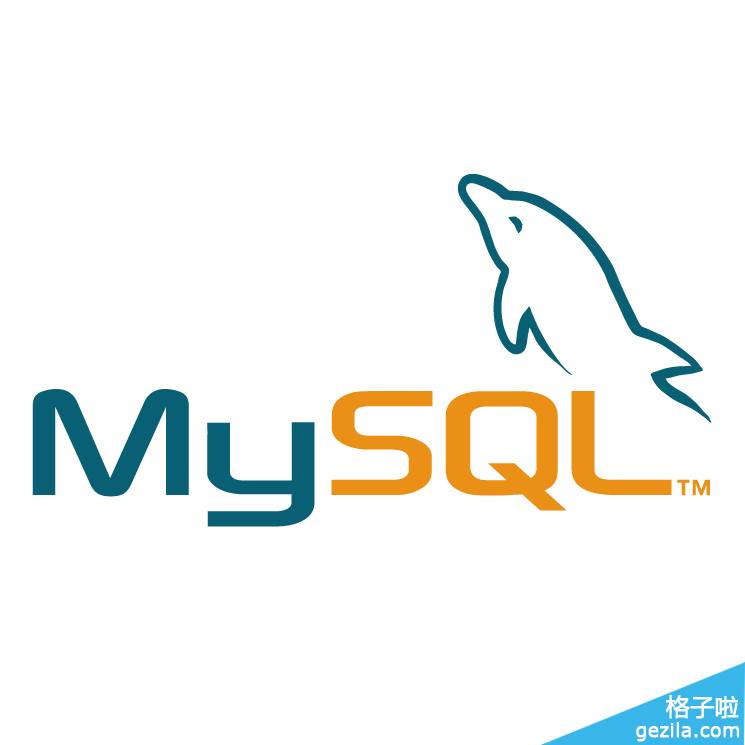 Database
Database
 Mysql Tutorial
Mysql Tutorial
 How to use multiple indexes? Summarize the usage of multiple index instances
How to use multiple indexes? Summarize the usage of multiple index instances
How to use multiple indexes? Summarize the usage of multiple index instances
Please indicate the source for reprinting: mysql index merging: one sql can use multiple indexes Preface MySQL's index merging is not a new feature. It has been implemented as early as mysql5.0 version. The reason why I still write this blog post is because many people still retain the misconception that a SQL statement can only use one index. This article will illustrate how to use index merging through some examples. What is index merging Let’s take a look at the description of index merging in the mysql document: The Index Merge method is used to retrieve rows with several range scans and to merge their results&
1. Summary Notes on Index Merge Click

##Introduction: Please indicate the source for reprinting: mysql Index merging: One SQL can use multiple indexes. Preface MySQL's index merging is not a new feature. It has been implemented as early as mysql5.0 version. The reason why I still write this blog post is because many people still retain the misconception that a SQL statement can only use one index. This article will illustrate how to use index merging through some examples. What is index merging? Let’s take a look at mysql article...
2. mysql index merging: One sql can use multiple indexes

Introduction: MySQL index merging is not a new feature. It has been implemented as early as mysql5.0 version. The reason why I still write this blog post is because many people still retain the misconception that a SQL statement can only use one index. This article will use some examples to illustrate how to use index merging
3. Java-Class Library-Guava-Table

Introduction: When we need multiple index data structures, usually, we can only use this ugly Map
4. Ask me about coreseek(Sphinx): Regarding the problem of multiple indexes corresponding to different lexicon, please help
Introduction: Please ask coreseek( Sphinx) question: Regarding the issue of multiple indexes corresponding to different lexicon, please help
5. MySQL redundant and duplicate indexes
Introduction: Redundant and Duplicate Indexes The concept of redundant and duplicate indexes: MySQL allows the creation of multiple indexes on the same column, regardless of...
6. Summary of new features in Oracle 12C SQL

7.
Supplementary instructions for index merge
Introduction: In addition to the common index merge cases (Index Merge Union Access Algorithm) introduced earlier, there is also a rare and special type of index merge, in which multiple indexes are scanned and then intersected, namely Index Merge Intersection. This type of execution plan is relatively rare (because MySQL requires ROR), but it can be used in appropriate scenarios8.
MySQL source code: Data structures related to Range access methods - -Continued
Introduction: The previous article focuses on how MySQL's WHERE condition constructs the corresponding SEL_ARG structure for a single index. This article is a supplement and will briefly introduce the corresponding SEL_ARG structure for multiple indexes. SEL_TREE structure. For a complete WHERE condition, MySQL will traverse all available indexes and construct their corresponding SEL_ARG structures one by one. All SEL_ARG structures are represented by pointer arrays9. Introduction to database system-[04] Index Introduction: 1. Index overview Creating an index is an effective means to speed up the query. Users can create one or more indexes on basic tables according to the needs of the application environment to provide multiple access paths and speed up searches. Generally speaking, the creation and deletion of indexes is completed by the database administrator DBA or the owner of the table, that is, the person who created the table. The system accesses the data ##10. Eliminate Key Lookup and RID Lookup Part2: Index Intersection and Index Join Introduction: Today I saw such a message in the MSDN query optimization suggestions: SQL Server will automatically consider it Index intersection allows you to use multiple indexes on the same table in the same query (which may be different from everyone's understanding). Before explaining, let’s look at an example: use AdventureWorks go select soh .* from sales . SalesOrderHeader AS [Related Q&A recommendations]: java - [Help]! How to create a multi-index directory for Sorl search? mysqlWhat command can mysql use two indexes at the same time
The above is the detailed content of How to use multiple indexes? Summarize the usage of multiple index instances. For more information, please follow other related articles on the PHP Chinese website!

Hot AI Tools

Undresser.AI Undress
AI-powered app for creating realistic nude photos

AI Clothes Remover
Online AI tool for removing clothes from photos.

Undress AI Tool
Undress images for free

Clothoff.io
AI clothes remover

Video Face Swap
Swap faces in any video effortlessly with our completely free AI face swap tool!

Hot Article

Hot Tools

Notepad++7.3.1
Easy-to-use and free code editor

SublimeText3 Chinese version
Chinese version, very easy to use

Zend Studio 13.0.1
Powerful PHP integrated development environment

Dreamweaver CS6
Visual web development tools

SublimeText3 Mac version
God-level code editing software (SublimeText3)

Hot Topics
 1664
1664
 14
14
 1423
1423
 52
52
 1317
1317
 25
25
 1268
1268
 29
29
 1243
1243
 24
24
 When might a full table scan be faster than using an index in MySQL?
Apr 09, 2025 am 12:05 AM
When might a full table scan be faster than using an index in MySQL?
Apr 09, 2025 am 12:05 AM
Full table scanning may be faster in MySQL than using indexes. Specific cases include: 1) the data volume is small; 2) when the query returns a large amount of data; 3) when the index column is not highly selective; 4) when the complex query. By analyzing query plans, optimizing indexes, avoiding over-index and regularly maintaining tables, you can make the best choices in practical applications.
 MySQL: Simple Concepts for Easy Learning
Apr 10, 2025 am 09:29 AM
MySQL: Simple Concepts for Easy Learning
Apr 10, 2025 am 09:29 AM
MySQL is an open source relational database management system. 1) Create database and tables: Use the CREATEDATABASE and CREATETABLE commands. 2) Basic operations: INSERT, UPDATE, DELETE and SELECT. 3) Advanced operations: JOIN, subquery and transaction processing. 4) Debugging skills: Check syntax, data type and permissions. 5) Optimization suggestions: Use indexes, avoid SELECT* and use transactions.
 MySQL: The Ease of Data Management for Beginners
Apr 09, 2025 am 12:07 AM
MySQL: The Ease of Data Management for Beginners
Apr 09, 2025 am 12:07 AM
MySQL is suitable for beginners because it is simple to install, powerful and easy to manage data. 1. Simple installation and configuration, suitable for a variety of operating systems. 2. Support basic operations such as creating databases and tables, inserting, querying, updating and deleting data. 3. Provide advanced functions such as JOIN operations and subqueries. 4. Performance can be improved through indexing, query optimization and table partitioning. 5. Support backup, recovery and security measures to ensure data security and consistency.
 MySQL's Role: Databases in Web Applications
Apr 17, 2025 am 12:23 AM
MySQL's Role: Databases in Web Applications
Apr 17, 2025 am 12:23 AM
The main role of MySQL in web applications is to store and manage data. 1.MySQL efficiently processes user information, product catalogs, transaction records and other data. 2. Through SQL query, developers can extract information from the database to generate dynamic content. 3.MySQL works based on the client-server model to ensure acceptable query speed.
 Explain the role of InnoDB redo logs and undo logs.
Apr 15, 2025 am 12:16 AM
Explain the role of InnoDB redo logs and undo logs.
Apr 15, 2025 am 12:16 AM
InnoDB uses redologs and undologs to ensure data consistency and reliability. 1.redologs record data page modification to ensure crash recovery and transaction persistence. 2.undologs records the original data value and supports transaction rollback and MVCC.
 MySQL: An Introduction to the World's Most Popular Database
Apr 12, 2025 am 12:18 AM
MySQL: An Introduction to the World's Most Popular Database
Apr 12, 2025 am 12:18 AM
MySQL is an open source relational database management system, mainly used to store and retrieve data quickly and reliably. Its working principle includes client requests, query resolution, execution of queries and return results. Examples of usage include creating tables, inserting and querying data, and advanced features such as JOIN operations. Common errors involve SQL syntax, data types, and permissions, and optimization suggestions include the use of indexes, optimized queries, and partitioning of tables.
 MySQL's Place: Databases and Programming
Apr 13, 2025 am 12:18 AM
MySQL's Place: Databases and Programming
Apr 13, 2025 am 12:18 AM
MySQL's position in databases and programming is very important. It is an open source relational database management system that is widely used in various application scenarios. 1) MySQL provides efficient data storage, organization and retrieval functions, supporting Web, mobile and enterprise-level systems. 2) It uses a client-server architecture, supports multiple storage engines and index optimization. 3) Basic usages include creating tables and inserting data, and advanced usages involve multi-table JOINs and complex queries. 4) Frequently asked questions such as SQL syntax errors and performance issues can be debugged through the EXPLAIN command and slow query log. 5) Performance optimization methods include rational use of indexes, optimized query and use of caches. Best practices include using transactions and PreparedStatemen
 Why Use MySQL? Benefits and Advantages
Apr 12, 2025 am 12:17 AM
Why Use MySQL? Benefits and Advantages
Apr 12, 2025 am 12:17 AM
MySQL is chosen for its performance, reliability, ease of use, and community support. 1.MySQL provides efficient data storage and retrieval functions, supporting multiple data types and advanced query operations. 2. Adopt client-server architecture and multiple storage engines to support transaction and query optimization. 3. Easy to use, supports a variety of operating systems and programming languages. 4. Have strong community support and provide rich resources and solutions.



